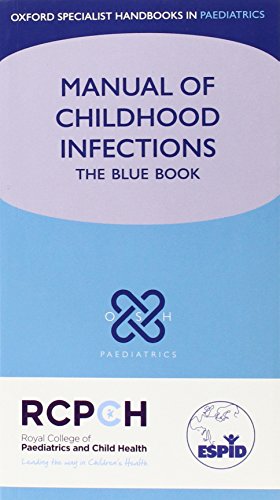مشاهده سبد خرید “Human Malformations and Related Anomalies 2015” به سبد خرید شما اضافه شد.
Manual of Childhood Infections: The Blue Book 2011
دانلود کتاب پزشکی کتاب راهنمای آسیب های دوران کودکی: کتاب آبی
دسته: اطفال, بیماری ها, بیماری های عفونی, پزشکی
ناشر:
OUP Oxford
| نویسنده |
Adam Finn, Andrew Cant, David A. C. Elliman, Delane Shingadia, E. Graham Davies, Mike Sharland, Susanna Esposito |
|---|
| تعداد صفحهها |
881 |
|---|---|
| نوع فایل |
|
| حجم |
3 Mb |
| سال انتشار |
2011 |
89,000 تومان
دانلود ۳۰.۰۰۰ کتاب پزشکی فقط با قیمت یک کتاب و ۹۹ هزار تومان !
توضیحات
کتاب راهنمای عفونت کودکان (که توسط خوانندگانش به عنوان کتاب آبی شناخته می شود) در حال حاضر در ویرایش سوم خود، که توسط کالج سلطنتی اطفال و بهداشت کودک و انجمن اروپایی بیماری های عفونی کودکان تأیید شده است، یک مدرک با استفاده آسان است. بر اساس راهنمای عملی نحوه تشخیص بیماری های عفونی شایع و نادر در کودکان و نوزادان بررسی و مدیریت شده است. کتاب راهنما به دو بخش تقسیم میشود که بخش اول مبتنی بر سندرم است و تمام ویژگیهای کلیدی تشخیصی و مدیریتی عفونتهای رایج دوران کودکی، مانند سپسیس، مننژیت و پنومونی را پوشش میدهد. بخش دو ارگانیسمهای خاص را فهرست میکند و تمام نکات کلیدی در اپیدمیولوژی، ویژگیهای بالینی و مدیریت همه عفونتهای اصلی را ارائه میکند. هر فصل شامل منابع کلیدی برای مطالعه بیشتر و پیشنهاداتی برای تحقیقات آینده است. این جزوه حاوی نکات مفید و راهنماییهای عملی، از جمله فهرستهایی از تشخیصهای جایگزین و جداول مفید، حاوی نسخههای نوزادان و کودکان برای حدود 100 مورد از رایجترین داروهای ضد میکروبی بر اساس BNF کودکان است، اما به صورت ساده و با استفاده آسان ارائه شده است. رژیم دوز بر اساس وزن. . عوارض جانبی رایج و هشدارها نیز گنجانده شده است. این کتاب هم برای کارآموزان جوانی که از کودکان بیمار مراقبت می کنند و هم همکاران ارشدی که می خواهند برنامه های مدیریتی آنها را بررسی کنند، برای مخاطبان بریتانیایی و اروپایی نوشته شده است و طیف عمل بالینی را در سراسر اروپا منعکس می کند و در عین حال نشان می دهد که راهنما کجاست. پایه قوی ترین است.
توضیحات(انگلیسی)
Now in its third edition, and endorsed by both the Royal College of Paediatrics and Child Health and the European Society of Pediatric Infectious Diseases, the Manual of Childhood Infections (known by its readers as The Blue Book) is a simple-to-use, evidence-based, and practical handbook on how to recognise, investigate and manage both common and rare infectious diseases in children and babies. The handbook is divided into two sections, the first of which is syndrome-based and covers all the key diagnosis and management features of common childhood infections, such as sepsis, meningitis, and pneumonia. The second section lists specific organisms, and provides all the key points in the epidemiology, clinical features, and management for all the key infections. Each chapter includes key references for further reading and suggestions for future research. Packed with helpful tips and practical guidance, including lists of alternative diagnoses and useful tables, the handbook also features a neonatal and paediatric formulary of around 100 of the commonest used antimicrobials based on the BNF for Children, but presented in a simple easy-to-use weight based dosing regimen. Common side effects and cautions are also included. The book is aimed at both junior trainees looking after ill children and more senior colleagues who want to check their management plans, and is written for both a UK and European audience, reflecting the range of clinical practice across Europe, while being clear where the evidence base is strongest.




